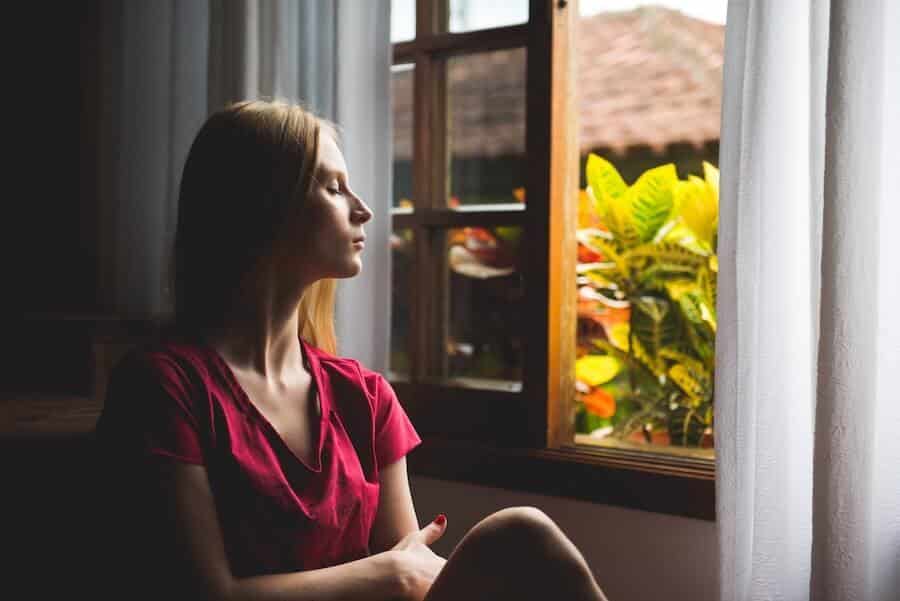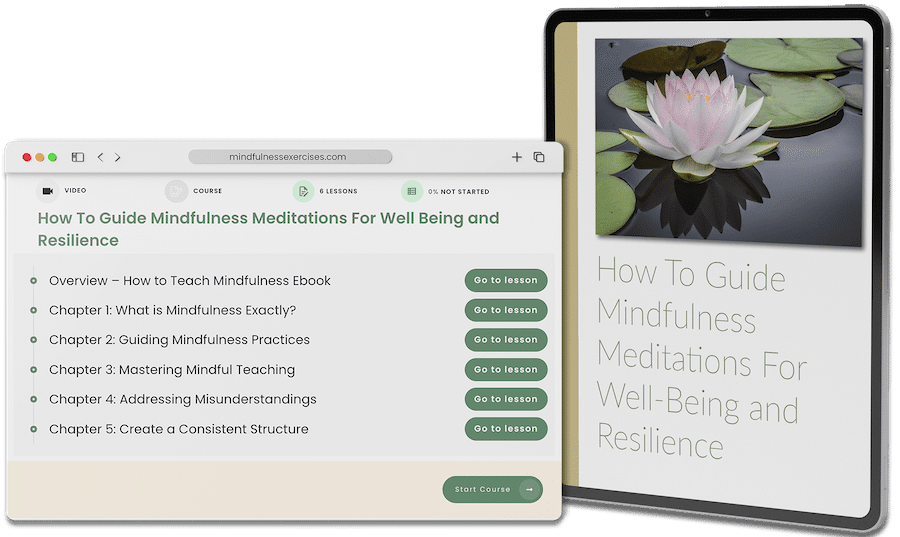Wherever you are in the world, you are likely feeling the direct or ripple effects of the novel coronavirus. From border, school, and business closures to mandatory social distancing measures, each of us are braving a new world unlike anything we have seen before. And yet while these times are stirring our collective fear, anxiety, and uncertainty, we also have an opportunity resting at our doorstep: an invitation to have a home meditation retreat.
Now more than ever we are being called to slow down, to tune in, and to unveil the peace, stillness, and love that radiate from our core. Given the contagion of fear and anxiety during these times, finding that peace and stillness can be challenging. Many of us are overwhelmed by news and media streams, finding it difficult to turn away and turn inside.

If, however, you are feeling the call to dive deeper into your mindfulness practice, the present slow-down of society presents a unique opportunity to take a self-guided, home meditation retreat. Given that many of us have more at-home time and fewer obligations than we did not long ago, now is the time to recommit to our innermost callings.

“Within you there is a stillness and sanctuary to which you can retreat at any time and be yourself.”
- Hermann Hesse -
What is a Home Retreat?
A home retreat is a self-designed, self-guided getaway. While we normally consider a retreat to take place somewhere far from home – perhaps in a lodge surrounded by pristine mountains or a shala overlooking the ocean – the true retreat is always the one that happens within. In other words, the physical move is less important than the inward one. A home retreat is the container for that inward movement.
While many of us are practicing yoga and meditation on a regular basis as it stands, a retreat takes our practice further. It invites us to turn away from the external world for a greater period of time and to turn with greater intent towards our practice. During this time, uncomfortable feelings or inner resistance may arise in a more profound way than during single sits. This grants us the opportunity to explore more of the inner world – to uncover edges we don’t tend to come into contact with in daily life.

Taking an at-home retreat grants us the time we need to truly rest. Though many of us have spent the past few weeks at home in isolation already, how much rest and release have we enjoyed? Without the intention and without the special container we set for ourselves, true rest can be difficult to come by. Home retreats help us to create that space.
How to Design Your Home Retreat
So, if you’ve decided you would like to take this time to retreat in your own home, preparation is the first step to ensuring you gain the most out of this special time. There are a few steps you will need to consider:
1. Set a Schedule
Deciding on a schedule is the first step to planning your home retreat. A schedule is the framework within which your intentional practices will fall. There are two components to consider when setting the schedule:
There is no ‘right’ schedule to set. We each have varying needs, roles, and responsibilities that will shape the way our retreat days (or half-days) will look. Further down you’ll find a sample schedule for a single day retreat. This can be repeated for a number of days, shortened for a more succinct retreat, and of course modified as required.
2. Consider Inclusions
The next thing you’ll want to consider is what your inclusions will be – and what equipment you’ll need to allow for these inclusions. For instance, what online talks, meditations, and teachers will your turn towards? What books will you read and how will you access those? Will you practice yoga, QiGong, or dance? And what space or equipment will you need to explore movement in your chosen way?
Before beginning your retreat, make note of what resources you’ll need by penning everything into your schedule. Save the links to your chosen online resources to minimize the distraction of trying to search for them later. Plan the retreat as if you were planning to lead someone else through it; ensure you are well organized.

3. Consider Exclusions
What doesn’t fit into your retreat plan? Make a plan for phone and computer usage, news and social media consumption, and any other distractions that might pull you away from your practice. If you are practicing a half or single day retreat, is it possible to go without your phone for the entire duration?
If you are self-guiding a multi-day retreat, what limitations will you pose on your technology engagement? Again, there is no ‘right’ or ‘wrong’ here; however, the more you are able to disconnect yourself from the online world, the deeper you will be able to descend.
4. Prepare Your Space
Next, you’ll want to consider how to set up your space. If you share a home with others, think about where you might be able to sit for personal practice undistracted. Once you have your schedule set, you might go through each activity and visualize where you will practice. This will help you to get a sense of how this retreat will flow.
Preparing your space also means making it as comfortable and sacred as you feel called to. You might have items of meaning that you’d like to build an alter with. Or, you may prepare a few candles and cushions to make the space feel cozy and intentional. While none of these external objects are necessary, they can help us to feel committed to this retreat – because it’s not every day we gain the chance to do this.
5. Communicate with Loved Ones
Before you retreat, ensure that you inform your loved ones or those you share your home with about your retreat plans. If you live with others, communicate your hopes and needs for space and silence so that they can support you in your practice.
If you live alone, you might want to inform your closest friends or family members that you will be unreachable for whatever duration of time you choose to go phone-free. This will help your loved ones to rest with ease if they don’t hear from you for a full day – and it will give you peace of mind, too.

6. Set Your Intention
Finally, while you likely had an intention going into this, now is the time to reaffirm what you’d like to harness or focus on during this home retreat. Reflect upon what virtues or elements of your life are in need of extra consideration. Some examples of intentions you might consider include:
These are just examples; your intention can be anything that arises from within. You might like to write your intention at the top of your schedule or in your journal so that you can easily reconnect with it throughout the retreat. Furthermore, whatever your intentions are, ensure that your mindfulness exercises, resources, and teachings are well aligned.
Mindfulness Exercises for Your Home Retreat
Though the home retreat will be self-guided, turning towards online teachings, resources, and spiritual or mindful communities will support your practice. In the sample schedule below, you will find a variety of mindfulness resources worth considering. Below the schedule are additional resources that can be swapped with the ones noted here – and of course, you can explore beyond what is listed here. And as mentioned, you can modify this schedule as it suits your needs and preferences.
Sample Schedule
7:00 – 7:30 – Silent or Guided Meditation
7:30 – 8:00 – Mindful Movement (i.e. Yoga, QiGong, Dance)
8:00 – 9:00 – Breakfast and Digest
9:00 – 10:00 – Guided Meditations and/or Talks
Examples:
10:00 – 10:30 – Mindful Walking (Guided or Self-Guided Practice)
Examples:
10:30 – 12:00 – Read, Rest, Journal, and/or Mindfulness Talks
Examples:
12:00 – 1:00 – Lunch and Digest
1:00 – 3:00 – Mindfulness Practice (Guided, Silent, or Both)
Examples:
3:00 – 4:00 – Rest
4:00 – 5:00 – Mindful Movement (i.e. Yoga, QiGong, Dance, Walk)
5:00 – 6:00 – Rest, Reflect, Write, or Read
Examples:
6:00 – 8:00 – Dinner & Digest
8:00 – 10:00 – Mindfulness Talks, Music, or Dance
The schedule above includes suggestions of resources you might use to guide you. As your retreat will have a unique intention according to your present needs, you are invited – and encouraged – to change this schedule around and to swap out mindfulness practices and talks as you see fit. Depending upon your intention, you might be interested in the resources listed under any of the following categories:
Love & Compassion – Talks & Meditations
Stress & Anxiety Release – Talks & Meditations
Buddhism & Spirituality – Talks & Meditations
Peace & Presence – Talks & Meditations
Books and Online Communities
Wrapping Up Your Retreat
When the hours or days of your retreat have arrived at their end, take some time to reflect upon the intention you set at the beginning of your practice. How will you carry it with you going forward? Thank yourself for taking the time to practice being present, bestowing yourself with extra love and gratitude as you wrap up.


















